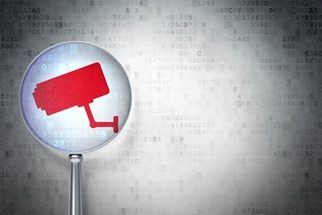Recent high-profile school emergencies have brought school safety to the forefront of the national conversation once more. Across the country, communities are debating the merits of a wide range of solutions, from staffing schools with armed guards and arming teachers, to instituting video monitoring of school buildings and grounds.
Cellular phone use in schools is prevalent, and some parent groups advocate for use of this popular technology because it can ensure mobile communications both indoors and outdoors. Most cellular emergency systems link student cell phone numbers and school eMail addresses together in order to broadcast emergency alerts. However, cellular coverage often varies by school district, and cellular technology cannot adequately locate mobile phone users indoors.
Video surveillance is another popular security enhancement to schools. Video has long been used to monitor school grounds, offering superior situational awareness to help first responders address emergencies. Cameras serve a dual purpose by capturing video footage during emergencies, and by deterring violence. However, CCTV systems do require ongoing staffing and can be costly for smaller schools.
Another possible complement to effective school policies and strong law enforcement presence is emerging radio frequency identification (RFID) technology that can improve communications and emergency response times by increasing teacher and student visibility during emergencies.
(Next page: How RFID technology can help make schools safer)
How RFID technology can help make schools safer
In an emergency situation, it’s essential that students and school personnel be found—and secured—quickly. With RFID technology, what would normally be invisible is visible, making it possible to identify the location of a staff member or teacher who has taken his or her class into hiding for their safety, or simply needs medical assistance or help with a disciplinary incident. By seeing through walls, and essentially shortening emergency response times, RFID solutions can help prevent an emergency from escalating into a tragedy.
Some of the newest breed of location tracking solutions, called Real-Time Location Systems (RTLS), use active RFID technology. Unlike passive RFID solutions of the past, which show “point-in-time” location, active RFID solutions provide location updates in real time. These solutions offer a unique approach to alerting by adding mapped visibility to the equation, so local dispatchers and first responders do not require map look-ups, manual dialing, voice prompts, or cellular phone coverage to learn about the location and nature of an emergency.
Some RTLS solutions rely on wireless or Wi-Fi (802.11) networks in schools in order to calculate real-time location. Other systems pinpoint location using readers and dedicated cabling, while some systems use cellular technology simply to report whether a student is present in the building or not.
RTLS gives schools the ability to…
- Reduce emergency response times on campus, both indoors and outdoors.
- Use RFID badge button presses or other mechanisms that communicate the location or the nature of an emergency to third parties or other badge or tag holders.
- Send mass communications over Wi-Fi or dedicated indoor networks without reliance on cellular networks.
- Receive alerts when individuals enter restricted zones in the school.
- Improve emergency planning.
(Next page: How does Active RFID work in schools?)
How does Active RFID (RTLS) work in schools?
Real-time location systems can “see” through wall and communicate location information to personnel and third parties, such as police dispatchers, over the web. Active RFID (RTLS) badges or tags with associated names can be stored securely on file, providing first responders with the identity of the person requesting help (e.g., M. Johnson, Teacher), as well as their location (e.g., Classroom #32, Longwood Elementary)—eliminating the need for school personnel to direct the police to them.
How it works:
- Upon entering the premises, teachers and staff are asked to wear or carry active RFID (RTLS) tags or badges, which operate over a network consisting of either dedicated cabling/readers or an existing Wi-Fi network.
- Optionally, badges are associated with user identities and other information.
- If a user pushes a badge button or pulls down on a badge during an emergency, those in proximity are programmed to receive not only the help request but also the user’s location—e.g., “Mrs. Johnson, 4thGrd, Rover HS, Room 3, Code Red.”
- RTLS badges read room-level locations, and RTLS software superimposes location coordinates onto real-time maps, indicating “Library,” “Classroom #3,” “Staff Lounge #1,” and “Gym” as examples.
- If a school guest leaves a pre-determined area set up in RTLS software, the RTLS tag or badge can alert designated security teams monitoring these restricted zones automatically via eMail or other communication.
In a world where greater visibility can minimize emergency response times, active RFID technology in the form of Real-Time Location Systems (RTLS) can complement a school’s existing safety policies, processes, and procedures to help keep students and teachers safe.
Mark Norris is president and CEO of Ekahau. You can read more about Ekahau’s 2013 Skyview High School case study here [1]. View the Ekahau RTLS badge in use on YouTube [2].
